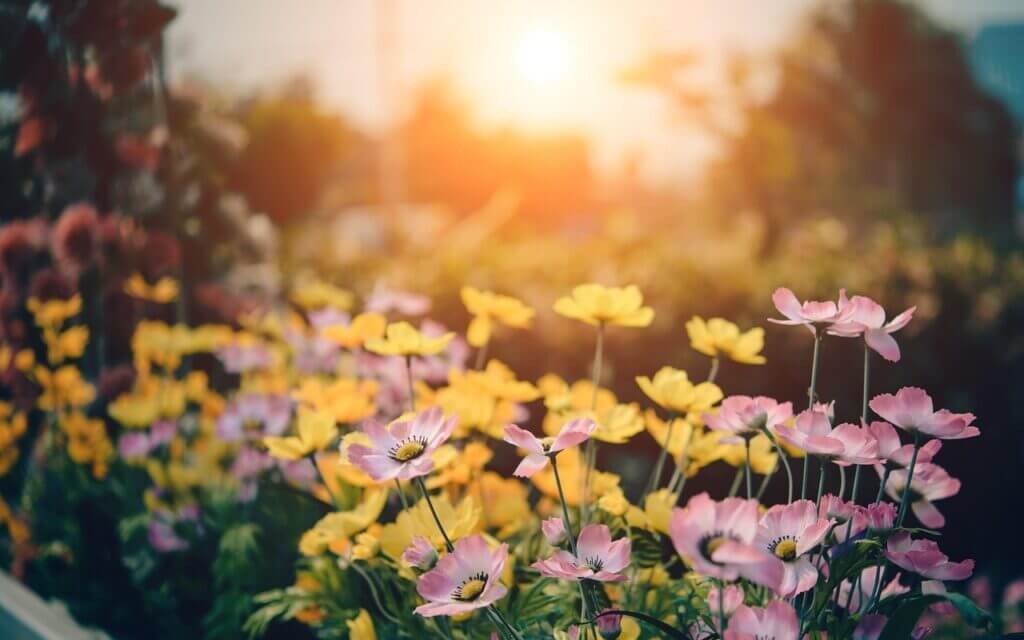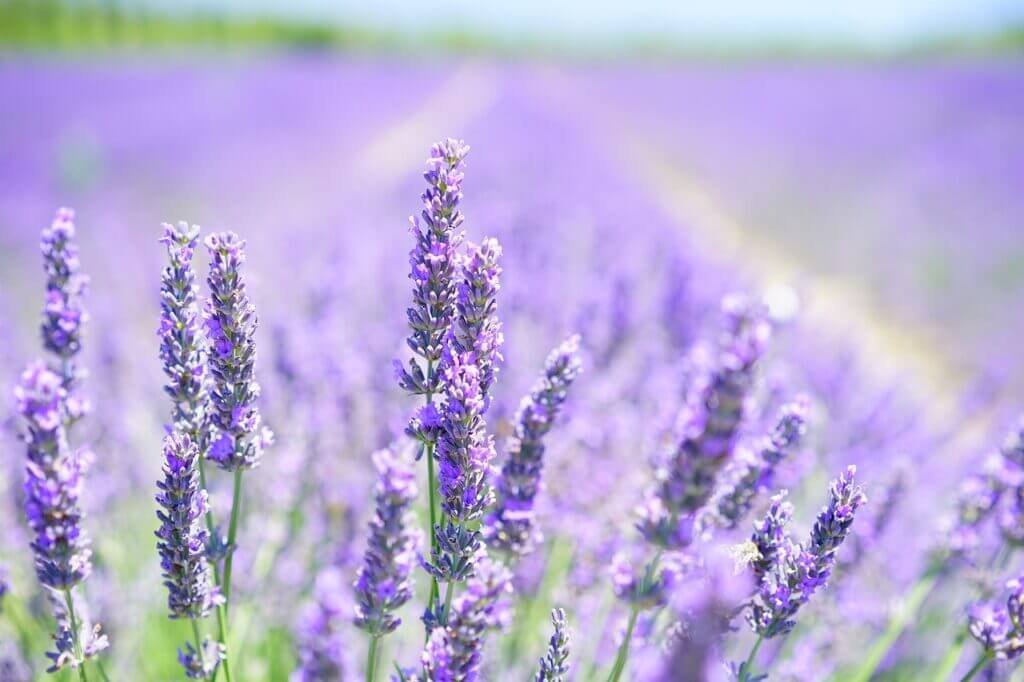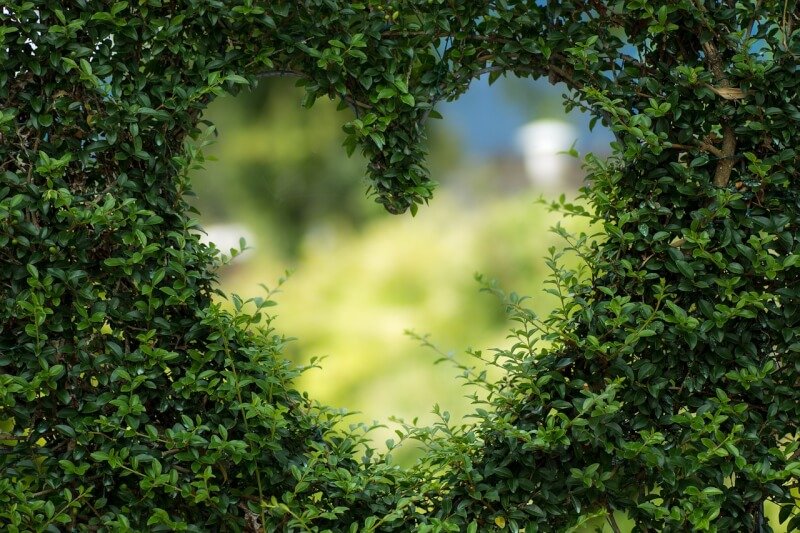In this article, you will discover the multitude of benefits that come with using native and drought-resistant plants in an urban garden. These plants not only add beauty and vibrancy to the environment but also bring practical advantages such as reduced water usage, improved soil health, and increased biodiversity. By incorporating these sustainable plants into your garden, you can create a green space that is not only visually appealing but also contributes positively to the ecosystem and conserves precious resources. So, let’s explore the numerous advantages of cultivating native and drought-resistant plants in your urban oasis.

Water Conservation
Using native and drought-resistant plants in your urban garden can greatly contribute to water conservation efforts. These plants have adapted to the local climate and can survive on minimal water requirements. By planting them in your garden, you can significantly reduce water usage. This not only helps you conserve water resources, but it also benefits the environment by decreasing the strain on local water supplies.
Reduced water usage
One of the primary benefits of using native and drought-resistant plants in an urban garden is the reduced water usage. These plants have evolved to thrive in the local climate and are naturally adapted to handle dry conditions. They have deep-rooted systems that allow them to absorb water efficiently, reducing the need for frequent watering. By choosing these plants for your garden, you can minimize water waste and make a positive impact on water conservation efforts.
Lower water bills
With the reduced water usage that comes with using native and drought-resistant plants, you can also enjoy the benefit of lower water bills. As these plants require less irrigation, your water consumption will decrease, resulting in significant cost savings over time. By incorporating these plants into your garden, you not only contribute to water conservation but also save money on your monthly water bills.
Reduced strain on local water supply
Urban areas often face challenges in meeting the water demands of their residents. By using native and drought-resistant plants in your garden, you can help alleviate the strain on the local water supply. With their ability to thrive on minimal water, these plants reduce the need for excessive irrigation and reliance on scarce water resources. By making a conscious choice to use plants that are adapted to the local climate, you can actively contribute to the sustainability of your community’s water supply.
Low Maintenance
Maintaining an urban garden can be time-consuming and labor-intensive. However, by using native and drought-resistant plants, you can significantly reduce the maintenance requirements.
Less pruning and fertilizing
Native and drought-resistant plants are well-suited to their local environments and require minimal pruning and fertilizing. These plants have evolved to grow in the specific conditions of your region, which means they naturally thrive without excessive intervention. This reduces the time and effort you need to dedicate to pruning and fertilizing, allowing you to enjoy your garden more with less maintenance work.
Decreased pest and disease problems
Another advantage of using native and drought-resistant plants is their decreased susceptibility to pest and disease problems. These plants have developed natural defense mechanisms to combat local pests and diseases, making them resilient and healthier overall. By choosing these plants for your urban garden, you can minimize the need for chemical pesticides and fungicides, creating a safer and more environmentally friendly space.
Minimal weeding required
When you use native and drought-resistant plants in your urban garden, you’ll notice a significant reduction in the need for constant weeding. These plants are typically well-adapted to the local soil and climate conditions, allowing them to outcompete weeds more effectively. Their dense root systems and natural ability to thrive in challenging conditions make them less susceptible to weed growth, simplifying the maintenance and upkeep of your garden.
Environmental Benefits
In addition to the water conservation benefits, using native and drought-resistant plants in an urban garden provides numerous environmental advantages.
Improved air quality
Native and drought-resistant plants play a crucial role in improving air quality. Through the process of photosynthesis, these plants absorb carbon dioxide and release oxygen, helping to filter and purify the air. By using these plants in your urban garden, you contribute to reducing air pollution and creating a healthier environment for both humans and wildlife.
Enhanced biodiversity
Urban areas often lack the natural diversity of plant and animal species found in more rural environments. By incorporating native plants into your garden, you provide vital habitats and food sources for local wildlife. These plants support a diverse range of insects, birds, and other beneficial creatures, promoting the enhancement of biodiversity in your community. By fostering a balance between urban development and nature, you create a more sustainable and vibrant ecosystem.
Reduced use of pesticides and herbicides
Traditional gardening practices often rely on the use of chemical pesticides and herbicides to control pests and weeds. However, by choosing native and drought-resistant plants, you can reduce or eliminate the need for these harmful chemicals. These plants have naturally evolved mechanisms to defend against pests and outcompete weeds, minimizing the reliance on pesticides and herbicides. This not only benefits the environment by reducing chemical runoff but also creates a safer and healthier environment for you and your family.

Climate Adaptability
Native and drought-resistant plants have a superior ability to adapt to local climate conditions, making them an excellent choice for urban gardens.
Better suited for local climate conditions
Native plants are uniquely adapted to the specific climate of your region. They have evolved and thrived in these conditions for generations, making them well-suited to handle the challenges posed by the local climate. By using these plants in your urban garden, you can ensure that your plants will have the best chance of survival and thrive in the long run.
Can withstand extreme temperatures
One of the significant advantages of using native and drought-resistant plants is their ability to withstand extreme temperatures. They have developed mechanisms to tolerate both scorching heat and freezing cold, allowing them to thrive even in harsh weather conditions. This resilience ensures that your garden remains vibrant and healthy throughout the year, regardless of any temperature fluctuations.
Less risk of plant loss due to weather changes
Extreme weather events, such as droughts or sudden heavy rainfall, can wreak havoc on traditional garden plants. However, native and drought-resistant plants have adapted to handle these weather fluctuations, reducing the risk of plant loss. By choosing these plants for your urban garden, you can have confidence that they will maintain their visual appeal and withstand any sudden changes in weather patterns.
Enhanced Aesthetics
Using native and drought-resistant plants in your urban garden not only benefits the environment but also enhances the overall aesthetics of your outdoor space.
Variety of colors and textures
Native plants offer a wide range of colors and textures that can add visual interest and beauty to your garden. From vibrant flowers to unique foliage, these plants provide a diverse and stunning display of natural aesthetics. By incorporating native plants into your urban garden, you can create a visually appealing and vibrant landscape that will be the envy of your neighborhood.
Can attract pollinators and wildlife
Native and drought-resistant plants are often excellent attractors of pollinators and wildlife. Their vibrant flowers and abundant nectar provide essential food sources for bees, butterflies, and birds. By creating a garden filled with these plants, you can promote and support pollination processes, which are crucial for the production of fruits and vegetables. Additionally, the presence of pollinators and wildlife adds a dynamic and lively element to your outdoor space, making it more enjoyable to spend time in and observe.
Provides a natural and authentic look
Using native and drought-resistant plants in your urban garden helps create a natural and authentic look. These plants are well-suited to the local environment, making them blend seamlessly with the natural surroundings. They offer a more genuine and harmonious aesthetic compared to non-native plants, which may appear out of place in an urban setting. By opting for native plants, you can create a garden that feels like an extension of the local landscape, promoting a sense of connection to nature.
Cost Savings
In addition to the environmental and aesthetic benefits, using native and drought-resistant plants in your urban garden can also lead to substantial cost savings.
Lower long-term maintenance costs
The low-maintenance nature of native and drought-resistant plants translates into significant long-term cost savings. With reduced pruning, fertilizing, and watering requirements, you’ll spend less on maintenance supplies, such as pruning shears, fertilizers, and irrigation systems. These cost savings can add up over time, allowing you to allocate your resources towards other aspects of your gardening projects or other areas of your life.
Reduced need for irrigation systems
By choosing native and drought-resistant plants, you decrease your reliance on irrigation systems. These plants have adapted naturally to your local climate and are well-equipped to survive on minimal water. This significantly reduces the need for costly irrigation systems, saving you money on equipment, water bills, and maintenance. With the right selection of native plants, you can create a beautiful garden that thrives with minimal watering.
Can be propagated easily
Another cost-saving benefit of using native and drought-resistant plants is their ease of propagation. These plants are often simple to propagate by division, cuttings, or seeds. This means that you can easily multiply your plants without the need to purchase new ones. By propagating your plants, you can save money on buying new plants and create a more sustainable and self-sufficient garden.

Reduced Carbon Footprint
Choosing native and drought-resistant plants for your urban garden contributes to a significant reduction in your carbon footprint.
Less transportation required
Non-native plants are often transported over long distances to reach garden centers or nurseries. This transportation process contributes to greenhouse gas emissions and the consumption of fossil fuels. In contrast, native plants are readily available within your local area, reducing the need for extensive transportation. By using native plants, you minimize the carbon emissions associated with plant transportation, making a positive impact on the environment.
Fewer greenhouse gas emissions
The reduced reliance on chemical pesticides and herbicides, as well as the decreased need for fertilizers, associated with native and drought-resistant plants, helps to lower greenhouse gas emissions. The production and application of these chemicals contribute to the release of greenhouse gases into the atmosphere. By choosing plants that naturally thrive in your region, you reduce the demand for these harmful chemicals, thereby reducing their environmental impact.
Lower energy consumption for landscaping
Traditional landscaping practices often require significant energy consumption, such as the operation of irrigation systems and lawn mowers. By using native and drought-resistant plants in your urban garden, you can reduce the need for these energy-intensive practices. With their minimal water requirements and low-maintenance nature, these plants minimize the need for irrigation and frequent mowing. By adopting these more sustainable practices, you can decrease your energy consumption and make a positive contribution towards combating climate change.
Resilience During Water Restrictions
Water scarcity and droughts are becoming more prevalent, particularly in urban areas. Native and drought-resistant plants offer resilience and visual appeal during times of water restrictions.
Survives during dry spells and droughts
Native plants are well-adapted to surviving in dry conditions and can withstand extended periods without regular watering. Their natural ability to conserve water and adapt to arid environments ensures that your garden remains vibrant even during dry spells and droughts. By choosing these plants, you can maintain the visual appeal of your garden while still adhering to water restrictions.
Less vulnerable to water restrictions
During periods of water restrictions, it can be challenging to maintain the health and beauty of a traditional garden. However, by using native and drought-resistant plants, you reduce your garden’s vulnerability to water restrictions. These plants have evolved to thrive in your area’s specific climate and require less irrigation. This makes them an ideal choice for maintaining a visually appealing landscape even when water use is limited.
Maintains visual appeal during water scarcity
One concern many gardeners have during times of water scarcity is the potential loss of their garden’s visual appeal. However, by incorporating native and drought-resistant plants, you can ensure that your garden remains visually pleasing, even with limited water availability. These plants are selected for their ability to retain their vibrant colors and attractive foliage in challenging conditions. By using them in your urban garden, you can enjoy a beautiful landscape while conserving water resources.
Native Species Conservation
Using native and drought-resistant plants in your urban garden contributes to the conservation of local flora and fauna.
Preserves local flora and fauna
Native plants are an essential part of the local ecosystem, supporting the habitats and food sources of many native species. By incorporating these plants into your garden, you actively participate in the preservation of local flora and fauna. This helps protect and maintain the natural biodiversity of your region, ensuring the survival of unique and valuable native species.
Protects genetic diversity
Native plants possess genetic diversity that is essential for the long-term survival and adaptation of species. By using native plants in your urban garden, you contribute to the preservation of this genetic diversity. This helps protect against the loss of valuable genetic traits and ensures that local flora and fauna have the necessary variation to adapt to changing environmental conditions.
Supports ecosystem balance
Native plants play a crucial role in maintaining ecosystem balance. They provide food, shelter, and nesting sites for a variety of wildlife, including birds, insects, and small mammals. By using these plants in your garden, you support the delicate balance between different species and promote the overall health and resilience of the local ecosystem. This has far-reaching effects on the environment and contributes to the sustainability of your community.
Greater Adaptability to Soil Conditions
Using native and drought-resistant plants in your urban garden provides numerous benefits in terms of soil adaptability.
Thrives in poor quality soil
Native plants have evolved to thrive in the specific soil conditions of your region, including poor quality soil. They have adapted mechanisms to extract essential nutrients from less fertile soils, ensuring their survival and growth. By incorporating native plants into your garden, you can bring life to areas of your urban landscape that may otherwise be considered unsuitable for plant growth.
Tolerates different levels of soil moisture
Native and drought-resistant plants are well-equipped to tolerate different levels of soil moisture. They have adapted to grow in both dry and moist conditions, making them versatile choices for your urban garden. This adaptability ensures that your plants can thrive even in areas where soil moisture levels fluctuate, making them a reliable and resilient addition to your landscape.
Resistant to soil erosion
Soil erosion is a common issue in urban areas, particularly in regions with heavy rainfall or sloping terrain. Native plants have extensive root systems that help stabilize the soil and prevent erosion. These plants act as natural erosion control mechanisms, reducing the risk of soil erosion in your garden. By using them in your urban garden, you can protect your landscape from the damaging effects of soil erosion and ensure the long-term health and stability of your soil.
Using native and drought-resistant plants in your urban garden offers a wide range of benefits. From water conservation and cost savings to environmental stewardship and climate adaptability, these plants provide a sustainable and resilient solution for your outdoor space. By incorporating them into your garden, you can create a visually appealing, low-maintenance, and environmentally friendly landscape that contributes to the overall well-being of your community and the planet.


